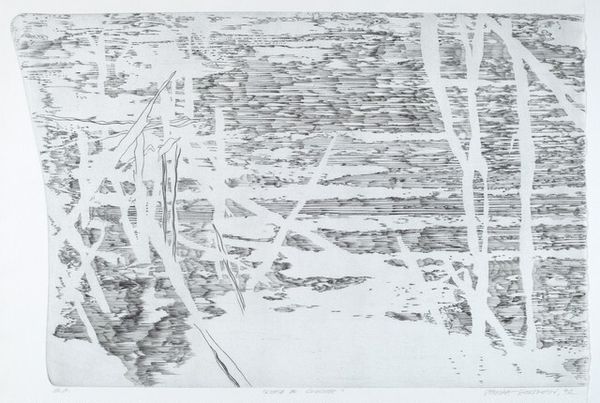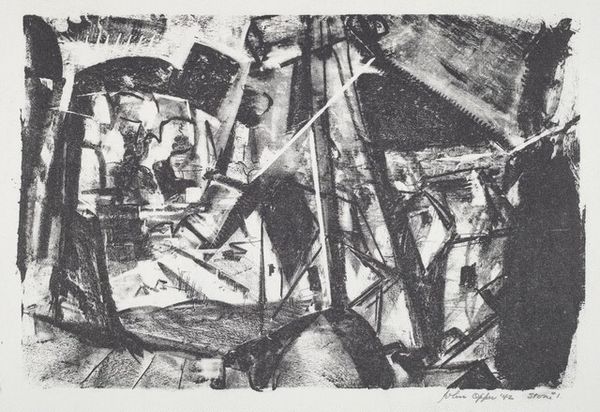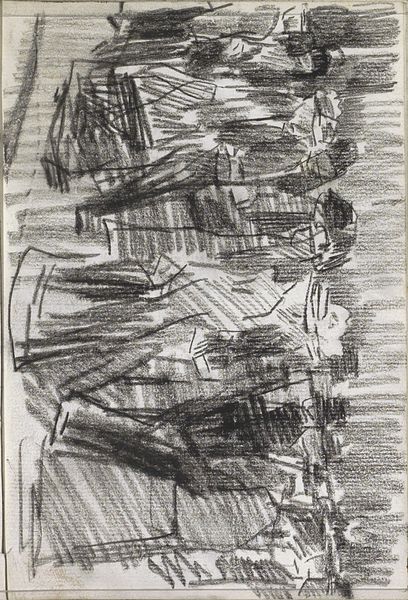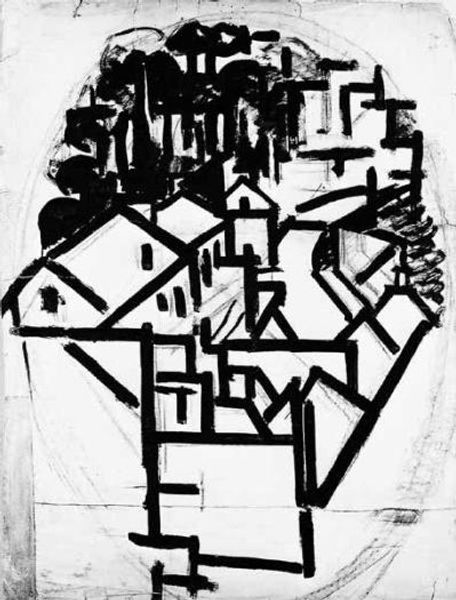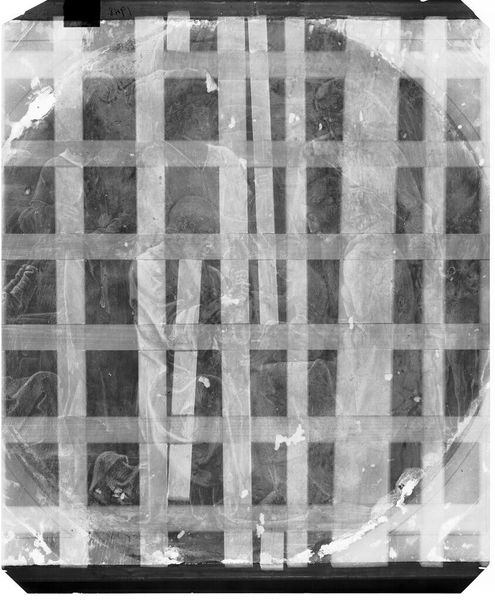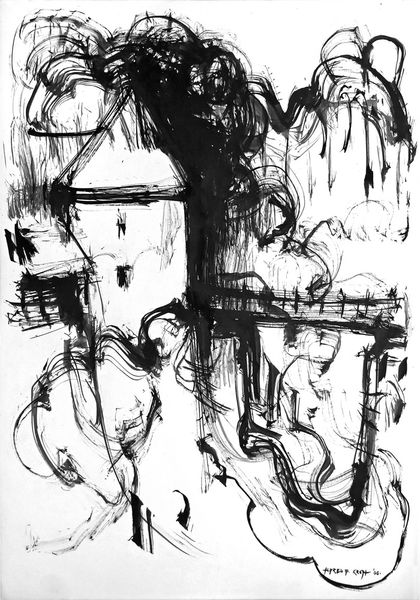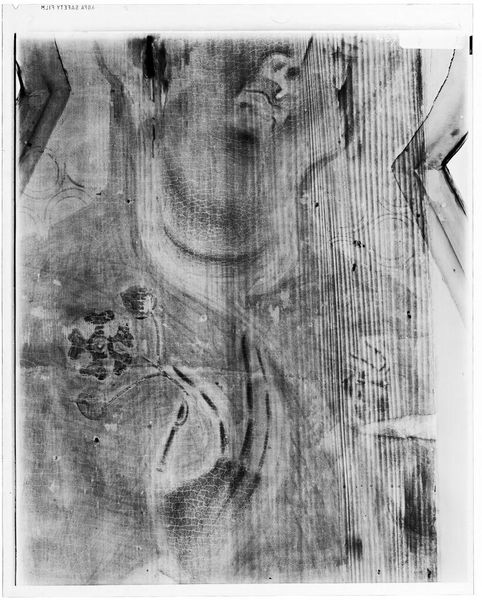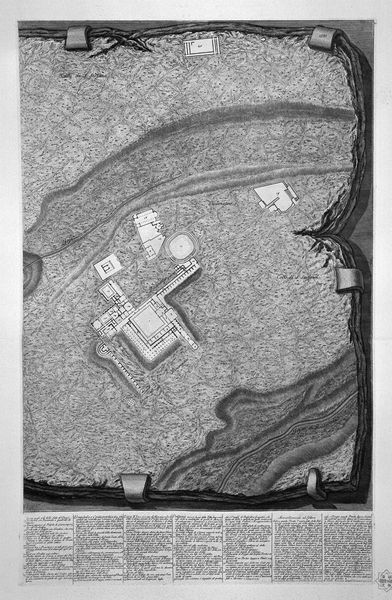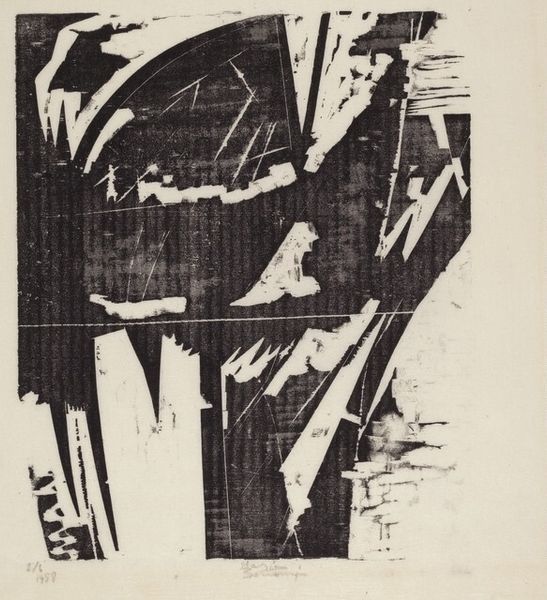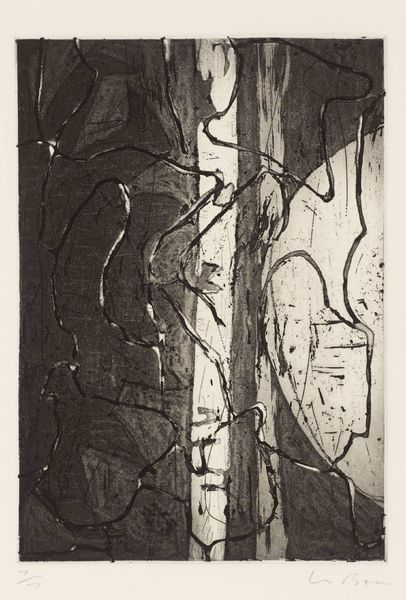
painting
#
abstract-expressionism
#
painting
#
geometric-abstraction
#
abstraction
#
line
Copyright: Jean Rene Bazaine,Fair Use
Editor: Here we have Jean Bazaine's "The Diver" from 1949, rendered in monochromatic paint strokes. It strikes me as quite chaotic, a whirlwind of geometric shapes. How do you interpret this work, especially considering its title? Curator: The title "The Diver" acts as a key, doesn’t it? Think about diving – the disorientation, the pressure, the distorted light. Bazaine uses abstraction to convey an experience rather than a literal scene. These fragmented shapes, the contrasting lights and darks – they could symbolize the breaking apart of the world as one plunges into water. Do you notice any recurring shapes or forms? Editor: Now that you mention it, I see a lot of grid-like structures, almost like looking through fractured glass. And there are these sweeping, curved lines… maybe representing movement? Curator: Exactly! The grid might suggest a world left behind, a structured reality that dissolves as the diver enters a fluid, less defined space. The curves echo the motion, the act of diving. Water has always been a powerful symbol of the subconscious, of cleansing and rebirth. Perhaps Bazaine is exploring those themes here. Editor: That's fascinating. So, even though it's abstract, it's still rich in symbolism and feeling. I wouldn't have picked that up on my own. Curator: It’s about unlocking the visual vocabulary. Once you begin to recognize how shapes and forms carry meaning, abstract art becomes much more accessible. This piece becomes not just about seeing, but *feeling* the dive. Editor: I see the painting in a totally new light. Thanks for illuminating it for me! Curator: And thank you for being such a perceptive observer. It enriches my viewing as well!
Comments
No comments
Be the first to comment and join the conversation on the ultimate creative platform.

